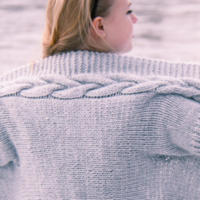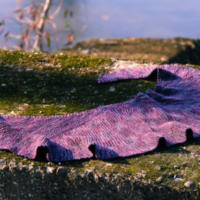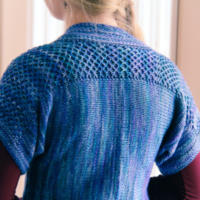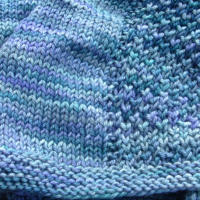
Named for the free flowing organic matter which is eroded and reshaped into a new form by running water, Alluvium is a blanket-style cardigan with wide wrapped fronts, a cropped back, and a winding braided cable around the neckline and front edges. Cast on at one front edge, it is knit sideways around the body in one piece to the other edge, with afterthought sleeves worked from live armhole stitches. The comforting shape can be worn wrapped and belted or pinned, or left to wander freely; the shorter back and sleeve lengths reduce the bulk of the sweater and take off the chill without smothering you. A versatile and unstructured chunky knit, Alluvium is a transitional cardigan for the changing winter season. Techniques & Skills Used: cable CO, knit/purl, picking up stitches, cables. Size: 28.5 (31, 34, 36.5, 39, 42, 44.5, 47)”, based on the cross-back width doubled, and shown in third size. As this wrap cardi does not have a true bust circumference, choose a size based on cross-back measurement. Yarn: Knit Picks Biggo . . .





